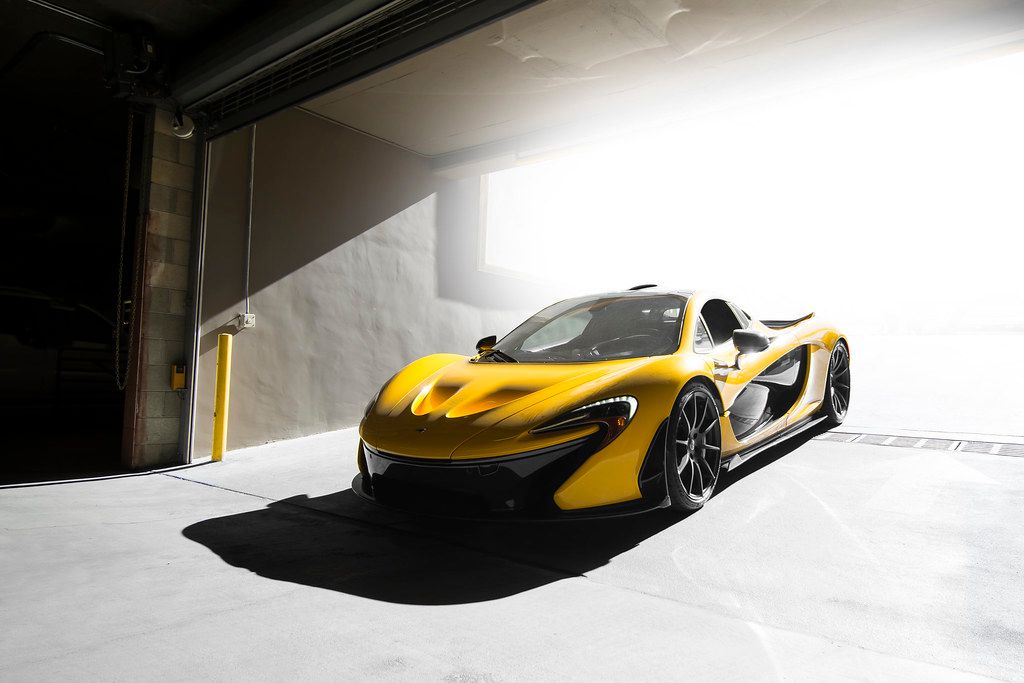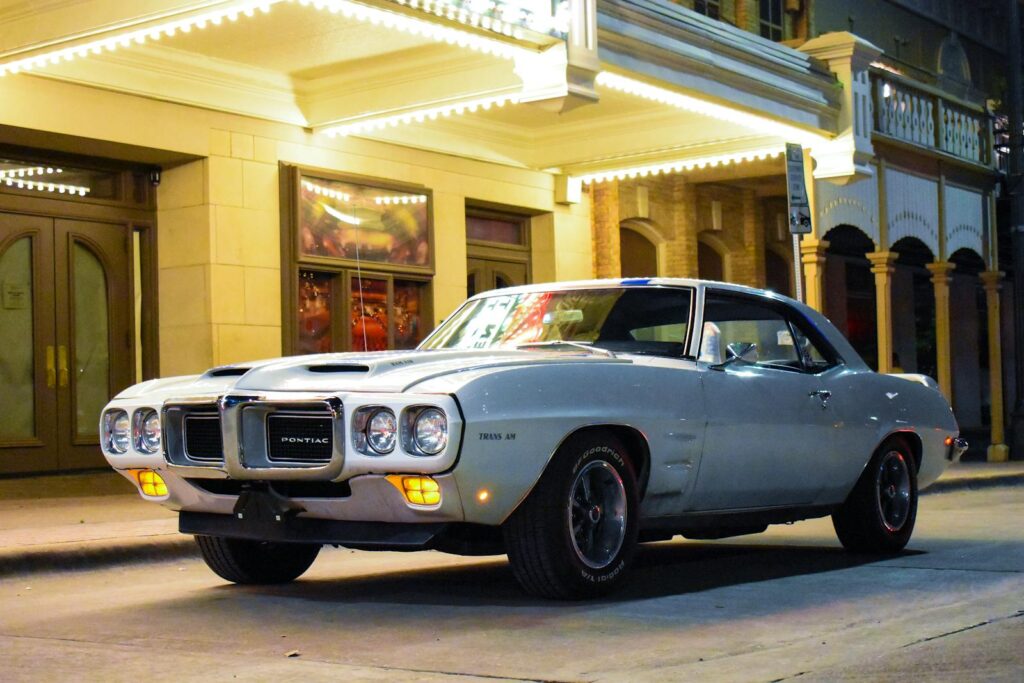
Alright, let’s talk cars – specifically, the kind that might just be costing you a whole lot more than you realize. Buying a new vehicle is one of the biggest investments many of us make, second only to a home, perhaps. And just like that new phone you snagged last year, its value starts to drop the moment you drive it off the lot. But here’s the kicker: not all vehicles shed their value equally, and some are like financial black holes, gobbling up your hard-earned cash at an alarming rate.
We’re diving deep into the fascinating (and sometimes heartbreaking) world of car depreciation. Thanks to comprehensive studies by iSeeCars, who analyzed over 800,000 five-year-old used cars sold between March 2024 and February 2025, we have a clear picture of which models are taking their owners to the cleaners. It’s not just a small percentage either; the industry average for all vehicles is a substantial 45.6% depreciation after five years, a noticeable jump from 38.8% in 2023. This means new cars are losing more money because both new and used car supplies are slowly returning to normal after the pandemic-related plant shutdowns.
Now, before you go thinking all cars are created equal in this value-losing race, think again. The rate of depreciation varies drastically across segments. Electric vehicles, for instance, are currently losing a staggering 58.8% of their value after five years. On the flip side, trucks and hybrids are holding up much better, shedding only about 40.4% and 40.7% respectively. This massive difference, as iSeeCars Executive Analyst Karl Brauer points out, could mean “tens of thousands of dollars in lost value.” So, if you’re looking to avoid one of the most expensive aspects of buying a new vehicle, you’re going to want to pay close attention to this list.
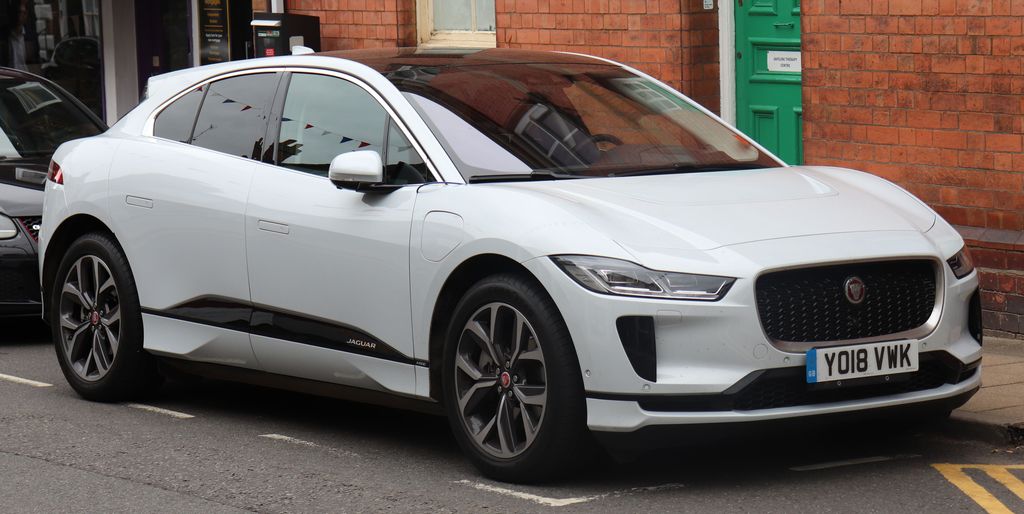
1. **Jaguar I-PACE**Kicking off our list with the dubious honor of being the champion of depreciation is the Jaguar I-PACE. This electric SUV, which once seemed like a visionary contender in the EV space, is now leading the pack in value loss. The I-PACE loses an astounding 72.2% of its original value over five years. Let that sink in for a moment: that’s an average of $51,953 vaporized from its MSRP. It’s a stark reminder that innovation, while exciting, doesn’t always translate to long-term financial stability in the automotive market.
When the I-PACE first hit the scene in 2019, it was hailed as an innovator, beating out luxury rivals like Audi, Mercedes-Benz, and Porsche to the electric SUV market. It even offered comparable range estimates to a Tesla Model X while being about $10,000 cheaper. Despite its early promise and critical acclaim, including multiple Car of the Year awards, it never achieved big sales numbers, which ultimately impacted its resale value. It seems that being first doesn’t always guarantee sustained market demand or strong residual values.
Adding to its current predicament, the Jaguar I-PACE is no longer in production, and Jaguar itself is described as being in a “precarious market position.” This combination of factors — early adopter status, relatively low sales volume, and an uncertain brand future — creates a perfect storm for rapid depreciation. While this is certainly tough news for original owners, it could represent an incredible opportunity for savvy used car buyers looking for a high-tech luxury EV at a drastically reduced price. Just be prepared for that steep initial drop.
Car Model Information: 2024 Jaguar I-PACE EV400 R-Dynamic HSE
Name: Jaguar I-Pace
Manufacturer: Jaguar Land Rover
Production: 2018–2024
Assembly: Magna Steyr
Designer: Ian Callum
Class: Compact crossover SUV#Luxury vehicles
BodyStyle: coupé SUV
Layout: all-wheel-drive
Platform: Jaguar Land Rover car platforms#D7e
Motor: Permanent magnet synchronous motor
Abbr: on
Transmission: 1-speed direct-drive reduction
Battery: kW·h,Lithium-ion battery
ElectricRange: United States Environmental Protection Agency
Charging: 11kW AC (7.4kW “1-phase/32A only” AC 2018–2020),100 kW DC
Wheelbase: 2990 mm
Length: 4682 mm
Width: ubl
Height: 1565 mm
Weight: 2133 kg
Sp: uk
Categories: 2020s cars, All-wheel-drive vehicles, All accuracy disputes, All articles lacking reliable references, All articles with specifically marked weasel-worded phrases
Summary: The Jaguar I-Pace (stylised as I-PACE) is a battery-electric crossover SUV produced by Jaguar Land Rover (JLR) under their Jaguar marque. The I-Pace was announced in March 2018, European deliveries began in June 2018 and North American deliveries started in October 2018. Amid slowing sales and a change in corporate vision, Jaguar has announced that the I-Pace will be discontinued by 2025.
Get more information about: Jaguar I-Pace
Buying a high-performing used car >>>
Brand: Jaguar Model: I-PACE
Price: $51,498 Mileage: 2,433 mi.
Read more about: 14 Cars That Drive Off a Financial Cliff: Understanding Rapid Depreciation and Smart Buying Strategies
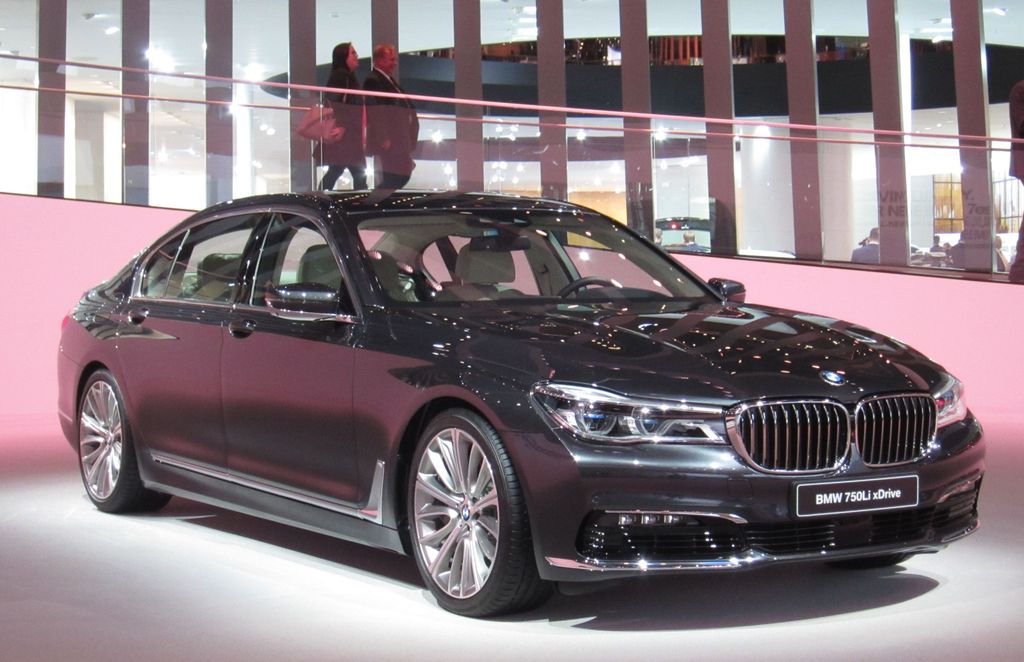
2. **BMW 7 Series**Next up on our list is a vehicle that embodies luxury and performance but also faces a brutal reality in the used car market: the BMW 7 Series. BMW’s flagship sedan takes a significant hit, losing an average of 67.1% of its value over five years. For new car buyers, this translates to a staggering average loss of $65,249. It’s a tough pill to swallow when you consider the premium price tag associated with these sophisticated machines.
The 7 Series is not alone in this depreciation struggle; it’s in rather high-end company. Other large German luxury sedans like the Audi A8 L (12th on the broader list) and the Mercedes-Benz S-Class (19th) also make appearances, reinforcing the idea that premium badges and advanced features, while desirable in a new car, are often not prioritized to the same degree in the used market. As iSeeCars Executive Analyst Karl Brauer notes, “the used car market doesn’t prioritize those traits to the same degree, thus the consistently higher depreciation for luxury models.”
Buying a new large German luxury sedan, it appears, is not a smart financial investment if resale value is a primary concern. The abundant and often fragile technology packed into these vehicles, coupled with potentially astronomical repair costs, can make even a used purchase iffy for some. However, for those on the hunt for a luxury bargain, the significant depreciation means you can find impressive deals on used 7 Series models. Just remember, as the experts suggest, springing for an extended warranty might be a wise move to mitigate those potential repair surprises.
Car Model Information: 2024 Honda Civic LX
Name: BMW 7 Series
Caption: BMW 7 Series (G11)
Manufacturer: BMW
Production: 1977–present
Class: Full-size car,luxury car
BodyStyle: sedan (car)
Predecessor: BMW New Six
Categories: All articles with dead external links, Articles with dead external links from July 2021, Articles with short description, BMW vehicle series, CS1 Chinese-language sources (zh)
Summary: The BMW 7 Series is a full-size luxury sedan manufactured and marketed by the German automaker BMW since 1977. It is the successor to the BMW E3 “New Six” sedan and is now in its seventh generation.
The 7 Series is BMW’s flagship car and is only available in a sedan bodystyle (including long wheelbase and limousine models). It traditionally introduces technologies and exterior design themes before other models in BMW’s lineup.
The first generation of the 7 Series was powered by straight-6 petrol engines, and following generations have been powered by inline-4, straight-6, V8 and V12 engines with both natural aspiration and turbocharging. Since 1995, diesel engines have been optional in the 7 Series.
Unlike the BMW 3 Series and BMW 5 Series sedans, BMW does not offer a full M model, but once offered an M performance variant, the BMW M760 with its 6.6L V12 (at the time the most powerful BMW ever made, not to be confused with BMW 760 6.6 V12 which does not offer the same performance). The Alpina B7 served as the high-performance variant of the 7 Series.
Get more information about: BMW 7 Series
Buying a high-performing used car >>>
Brand: BMW Model: 7 Series
Price: $21,650 Mileage: 17,979 mi.
Read more about: Unpacking the Generational Divide: 14 Classic Boomer Cars Millennials Just Aren’t Craving – And Why
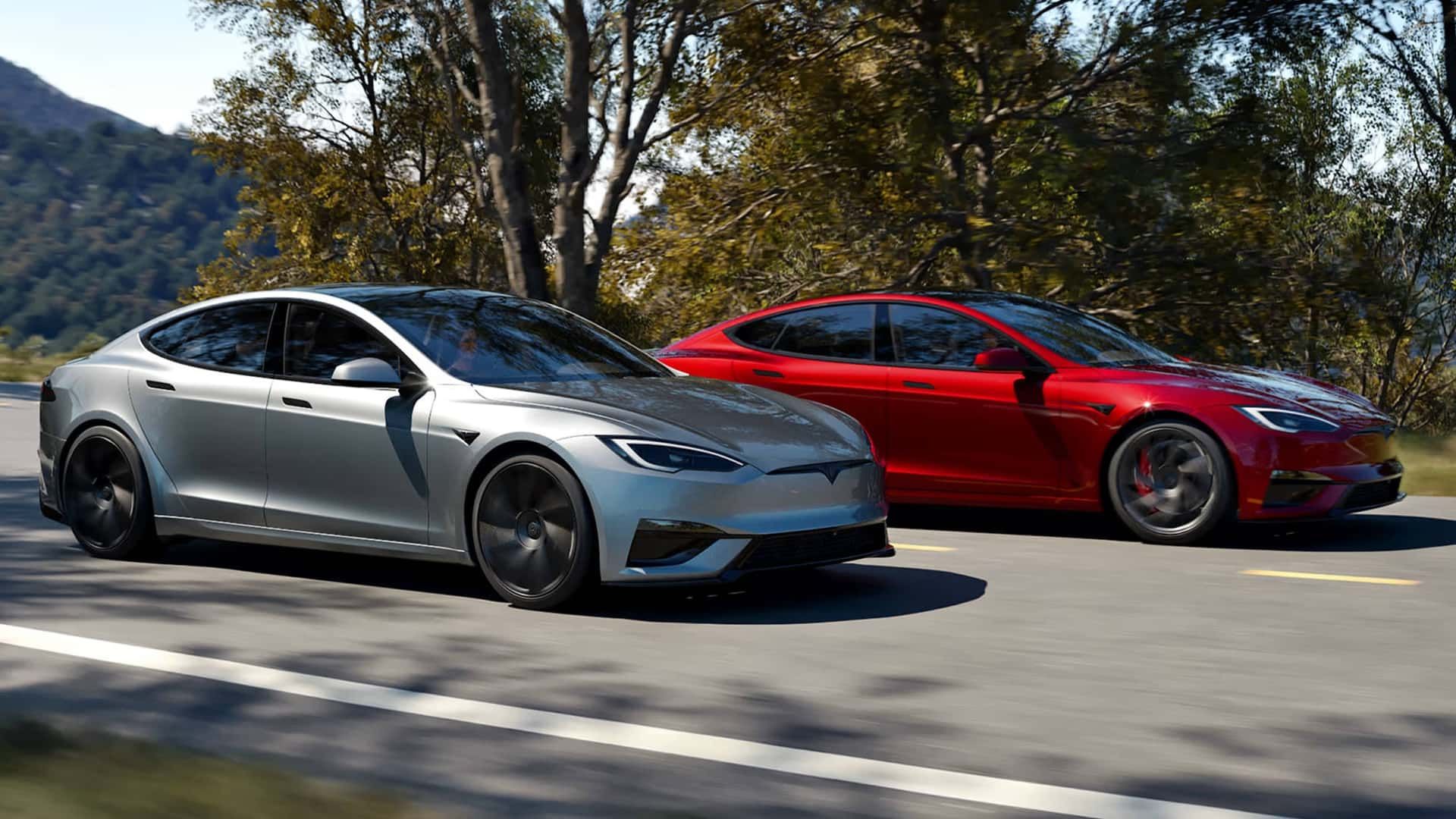
3. **Tesla Model S**Landing squarely in third place on our list of fastest depreciating cars is the Tesla Model S. This trailblazing electric sedan, which redefined expectations for EVs, now sees an average loss of 65.2% of its value over five years. This translates to a substantial $52,165 difference from its original MSRP. It’s a compelling example of how even groundbreaking technology can succumb to the rapid pace of innovation and market shifts.
The Model S has been on sale for an extended period, 13 years to be exact, without a major redesign since its introduction. While it was a truly unique offering back in 2012, setting benchmarks for range and performance, the landscape of electric vehicles has evolved dramatically. It now faces stiff competition from a multitude of manufacturers offering increasingly sophisticated and often more up-to-date alternatives. This consistent design, combined with aggressive pricing changes and new models from Tesla itself, contributes to its significant value erosion.
For potential buyers, the message is clear: purchasing a new Model S today might not be the wisest financial move if you’re concerned about long-term value retention. The market is saturated with newer, highly capable EVs that may offer better value. However, for those who still desire the iconic Model S experience, the high depreciation rate means there are plenty of used models available at significantly reduced prices. It’s a chance to own a piece of automotive history, albeit with a mindful eye on what that initial depreciation means for your wallet.
Car Model Information: 2024 Honda Civic LX
Name: Tesla Model S
ModelYears: 2013–present
Alt: A front-three quarter view of a gray Model S
Caption: #2016–2019: First major update
Designer: Franz von Holzhausen
Weight: cvt
Height: cvt
Width: cvt
Length: cvt
Wheelbase: cvt
ElectricRange: cvt
Battery: kWh,lithium-ion battery
Motor: Unbulleted list
Transmission: Reduction drive
Related: Tesla Model X
Layout: Rear-motor, rear-wheel drive,Dual-motor, all-wheel-drive,Tri-motor, all-wheel-drive layout
BodyStyle: liftback,sedan (automobile)
Class: Full-size car
Assembly: Unbulleted list
Production: June 2012 – present
Manufacturer: Tesla, Inc.
Sp: us
Chassis: Unibody
Categories: 2020s cars, All-wheel-drive vehicles, All Wikipedia articles written in American English, All articles containing potentially dated statements, Articles containing potentially dated statements from 2025
Summary: The Tesla Model S is a battery-electric, four-door full-size car produced by the American automaker Tesla since 2012. The automaker’s second vehicle and longest-produced model, the Model S has been described as one of the most influential electric cars in the industry. Car and Driver named it one of the best cars of the year in 2015 and 2016. Its various accolades include the Motor Trend Car of the Year Award in 2013.
Tesla started developing the Model S around 2007 under the codename WhiteStar. Initially, Henrik Fisker was appointed as the lead designer for the WhiteStar project; after a dispute with Elon Musk, Tesla’s CEO, Fisker was replaced by Franz von Holzhausen. By 2008, von Holzhausen had designed what would become the production Model S’s exterior. Tesla unveiled a prototype of the vehicle in March 2009 in Hawthorne, California. In 2010, Tesla acquired a facility in Fremont, California, to produce the Model S, which was previously owned by General Motors and Toyota. Series manufacture of the car officially began at the Tesla Fremont Factory in June 2012. Tesla carried out the final assembly for European markets at its facilities in Tilburg, Netherlands, between 2013 and 2021.
The Model S typically uses either one or initially two alternating current induction motors; since 2019, dual-motor versions have used a permanent magnet motor in the front, though the high-performance Model S Plaid’s three motors are permanent magnet units by default. Constructed mostly of aluminum, the Model S shares 30 percent of its components with the Model X—a crossover SUV that was introduced in 2015. The Model S has undergone several updates during its production, the most prominent ones occurring in 2016 and 2021. These updates have usually included modifications to the motor, such as changes to power or torque, revised exterior elements, and refreshed interior features. One such change included the 2015 introduction of Tesla Autopilot—a partial vehicle automation advanced driver-assistance system.
In 2015, the Model S was the world’s best-selling plug-in electric vehicle. In 2012, it was included on Time’s list of the Best Inventions of the Year, and the magazine later included it on its list of the 10 Best Gadgets of the 2010s in 2019. In 2014, The Daily Telegraph described the Model S as a “car that changed the world”. Road & Track argued that, with the introduction of the Plaid and features such as the yoke steering wheel, Tesla managed to turn the Model S into “perhaps one of the worst [cars in the world]”.
Get more information about: Tesla Model S
Buying a high-performing used car >>>
Brand: Tesla Model: Model S
Price: $21,650 Mileage: 17,979 mi.
Read more about: 15 Cars That Become Costly Money Pits After 100,000 Miles: Essential Insights for Savvy Buyers
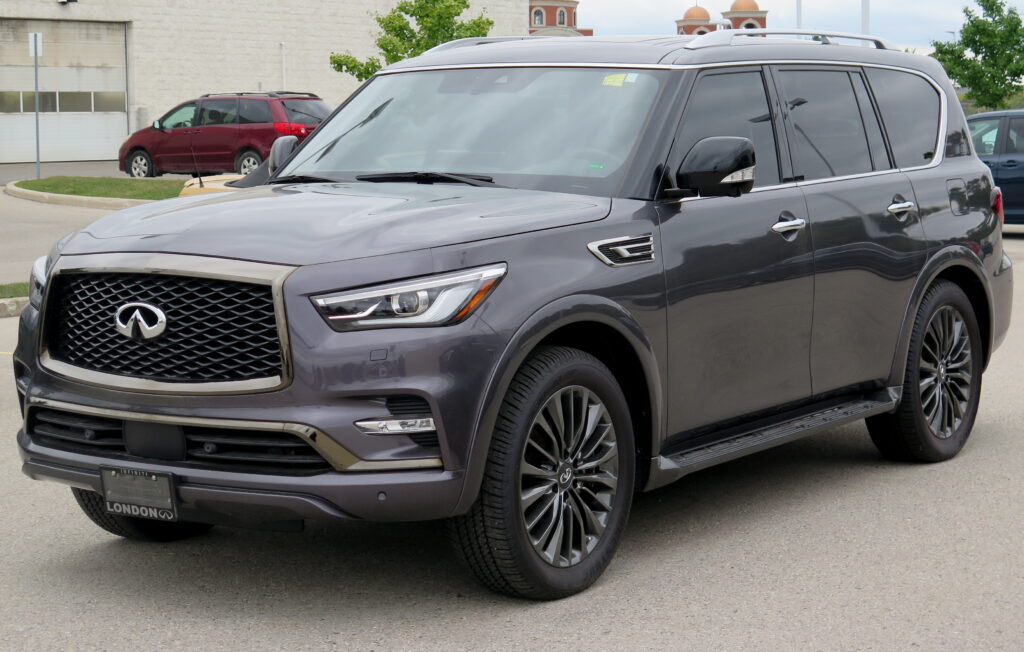
4. **INFINITI QX80**Taking the fourth spot on our list is the large and luxurious INFINITI QX80, an SUV that exemplifies the depreciation challenges faced by many premium, full-size vehicles. This imposing SUV loses an average of 65.0% of its value over five years. For owners, this equates to a hefty financial hit of $53,571 from its initial sticker price. It’s a prime example of how even segment-leading luxury can’t always defy the laws of depreciation.
Platform-mates often share similar fates, and in the QX80’s case, its sibling, the Nissan Armada, also experiences significant depreciation, though slightly less severe. The Armada ranks 24th on the broader list, losing 60.0% of its value, or $33,914 over five years. This indicates a general trend where large, full-size SUVs, particularly those with a luxury badge, tend to shed value faster than the overall market average, often due to higher initial prices and a shifting demand in the used car market.
The INFINITI QX80 is specifically noted as the fastest depreciating large SUV on the list. For those who appreciate its commanding presence, spacious interior, and opulent features, this high depreciation rate presents a compelling proposition in the used car market. While new buyers absorb a significant loss, potential second owners can find some truly great deals on used QX80 models, making luxury more accessible. It underscores the point that one person’s depreciation headache is another’s opportunity for a premium vehicle at a discount.
Car Model Information: 2022 INFINITI QX80 Luxe
Name: Infiniti QX80
Caption: 2019 Infiniti QX80 (US)
Manufacturer: Nissan
Aka: Infiniti QX56 (2004–2013)
Production: 2004–present
Class: Full-size,luxury SUV
BodyStyle: SUV
Layout: Front-engine, rear-wheel-drive,Front-engine, four-wheel-drive
Predecessor: Nissan Pathfinder#Infiniti QX4
Chassis: Body-on-frame
Categories: 2010s cars, 2020s cars, All-wheel-drive vehicles, All articles with failed verification, All articles with unsourced statements
Summary: The Infiniti QX80 (formerly called the Infiniti QX56 until 2013) is a full-size luxury SUV marketed by Nissan’s luxury division Infiniti. The first-generation QX56 was built in the United States and is based on the first-generation Armada. The second-generation model was released in 2010 as a model produced in Japan, which used the sixth-generation Patrol (later also marketed as the second-generation Armada since 2016) as the base vehicle instead. Since the 2014 model year in 2013, the vehicle was renamed to the QX80 as Infiniti renamed their entire product line under a new nomenclature.
Get more information about: Infiniti QX80
Buying a high-performing used car >>>
Brand: INFINITI Model: QX80
Price: $37,990 Mileage: 35,425 mi.
Read more about: Consumer Reports Insights: 12 Top SUVs Proven to Last Over 250,000 Miles for Unrivaled Long-Term Value
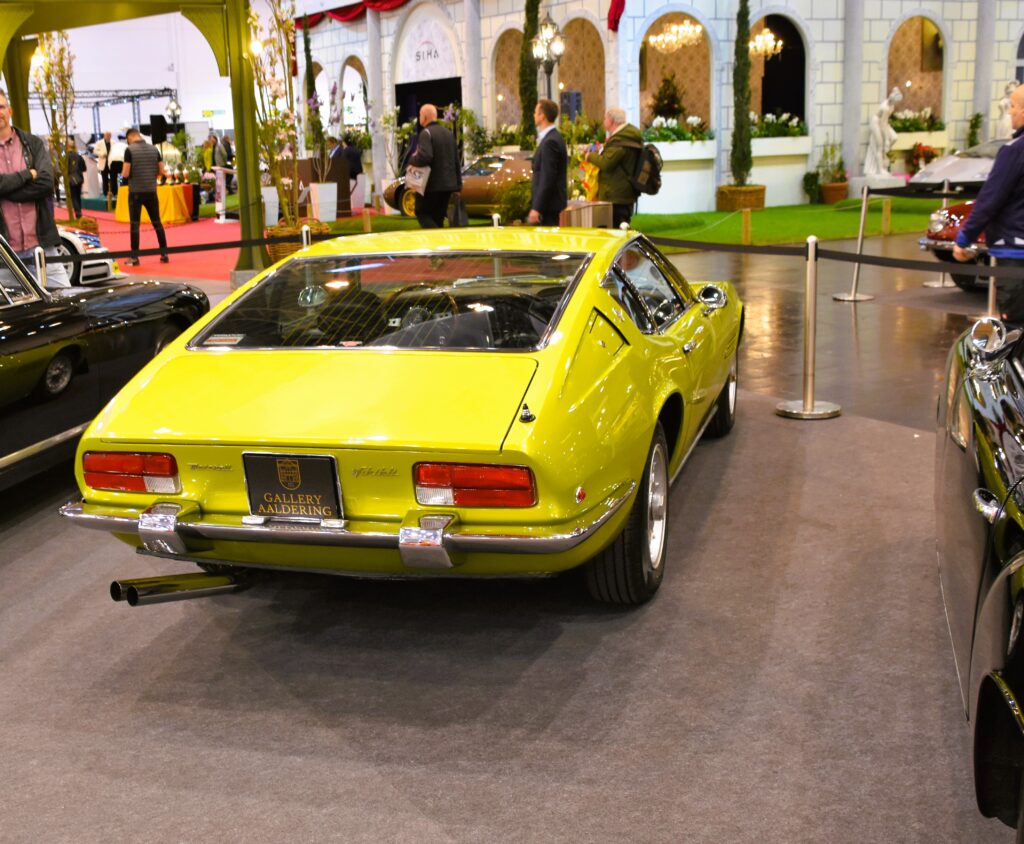
5. **Maserati Ghibli**Rounding out the first half of our deepest depreciation dive is the Maserati Ghibli, a car that has, regrettably, become notorious for its appalling resale values. This year is no exception, with the Ghibli losing an average of 64.7% of its value over five years. But here’s where it gets truly eye-watering: due to their exotic car starting prices, this percentage translates into the highest dollar amount lost on our list, a staggering $70,874. That, my friends, is a serious chunk of change to see vanish.
Seth Godwin, a personal finance content creator, minces no words when discussing Maserati’s depreciation, stating, “Why anyone buys a Maserati is beyond me, But to buy one brand new takes a level of straight-up ignorance I can’t comprehend.” While perhaps a bit harsh, his sentiment reflects the stark financial reality many Ghibli owners face. The allure of an exotic Italian badge often comes with a steep price, both upfront and in subsequent value retention. This isn’t just about the Ghibli, either; Maserati models generally face significant depreciation across the board, with the Levante also appearing on this list.
So, if the dream of owning a Maserati Ghibli still calls to you, the used car market is definitely your friend. This severe depreciation means that brave souls willing to venture into the world of used Italian exotics can find incredible deals. While it’s certainly not for the faint of heart, given the potential for higher maintenance costs, the initial savings on the purchase price could be substantial enough to make that dream a reality for those on a budget who want to look richer than they actually are. Just know what you’re getting into, and perhaps consider those extended warranties!”
Car Model Information: 2018 Maserati Ghibli Base
Name: Maserati Ghibli
Caption: 2018 Maserati Ghibli GranLusso
Manufacturer: Maserati
Assembly: Modena,Grugliasco,Turin
Class: Grand tourer,Executive car
BodyStyle: fastback,coupé,Roadster (automobile),Sedan (automobile)
Production: AM115: 1967–1973,AM336: 1992–1998,M157: 2013–2023
Categories: 1970s cars, 1990s cars, 2010s cars, Articles with short description, CS1 Italian-language sources (it)
Summary: Maserati Ghibli is the name of three different cars produced by Italian automobile manufacturer Maserati: the AM115, a V8 grand tourer from 1967 to 1973; the AM336, a V6 twin-turbocharged coupé from 1992 to 1998; and the M157, an executive saloon from 2013 to 2023.
Ghibli is the Libyan Arabic name for the hot dry south-westerly wind of the Libyan desert.
Get more information about: Maserati Ghibli
Buying a high-performing used car >>>
Brand: Maserati Model: Ghibli
Price: $16,980 Mileage: 66,162 mi.
Read more about: The Costly Truth: 14 Classic Cars That Are Simply Not Worth Restoring for the Savvy Enthusiast
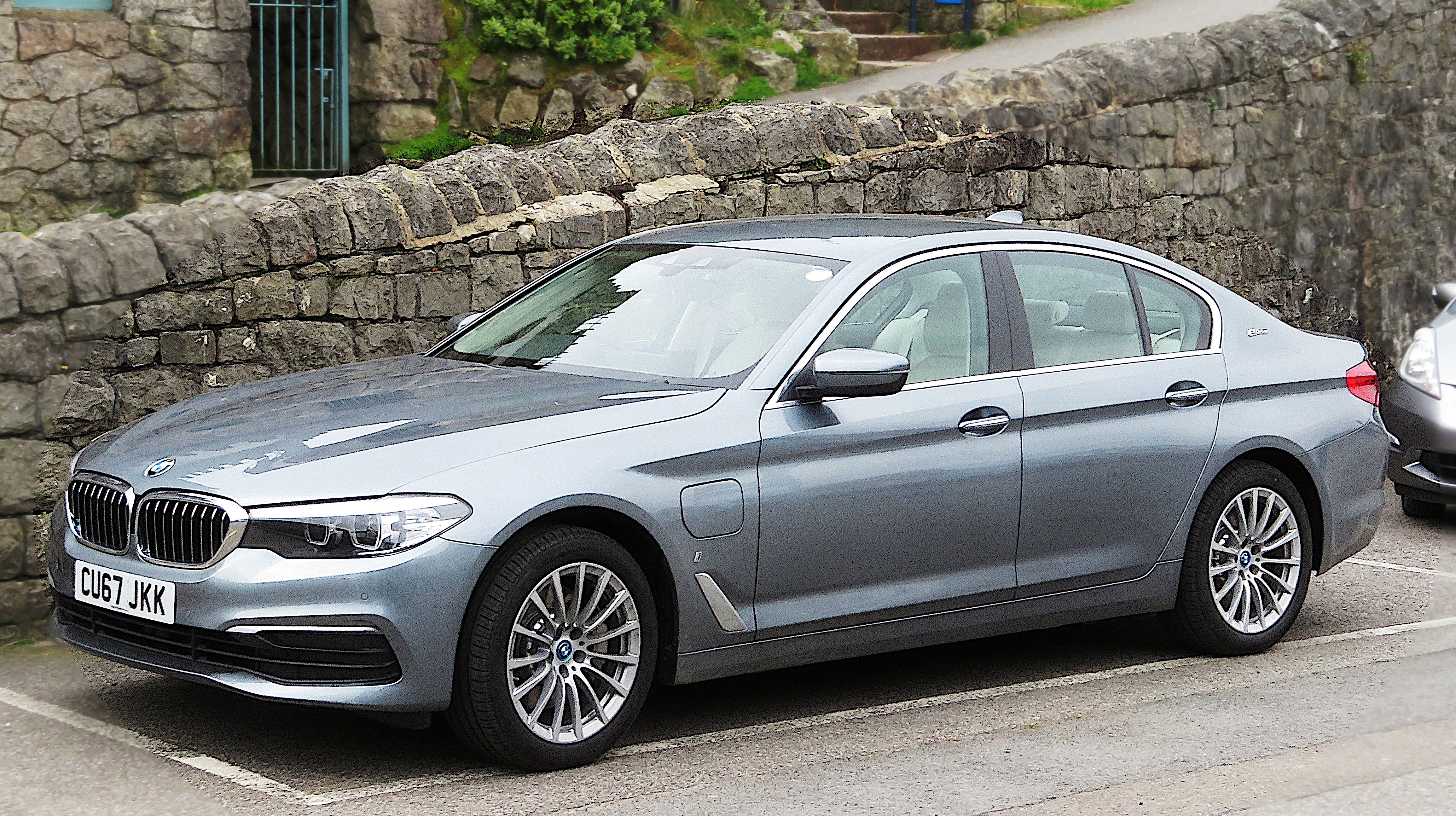
6. **BMW 5 Series Hybrid**Hold onto your hats, because we’re diving back into the world of luxury sedans that just can’t seem to hold their value. Up next is the BMW 5 Series Hybrid, a car that perfectly encapsulates the paradox of premium vehicles: fantastic to drive new, but a significant financial drain five years down the road. This particular variant sheds an average of 64.7% of its initial value over half a decade, which translates to a chunky $47,457 evaporating from its original price tag. It’s a steep curve, even for a brand renowned for its driving dynamics.
The standard internal combustion engine 5 Series models fare only slightly better, still landing at a less-than-stellar 13th place on the overall depreciation list. This solidifies a pattern: luxury badges, while desirable, often come with a hidden cost when it comes to resale. The allure of cutting-edge technology and sophisticated design seems to wane considerably in the used car market, where practicality and long-term running costs often take precedence.
Personal finance guru Seth Godwin, never one to mince words, previously highlighted the hybrid 5-Series’ struggle, noting its substantial value loss and declaring, “BMW and ‘Worst of’ lists go hand in hand. This shouldn’t be a surprise to anyone.” While his specific figures for this model might vary slightly from the iSeeCars study, his sentiment remains powerfully accurate: if you’re buying a new BMW 5 Series, be prepared for a steep drop in value. The market simply doesn’t reward these vehicles with strong residual values.
But for driving enthusiasts on a budget, this significant depreciation could be your golden ticket. A quick look at used BMWs reveals that 5 Series models are becoming impressively affordable. It’s not uncommon to find pre-owned 5 Series sedans priced even lower than some 3 Series models from the same model year with similar mileage. This means that if you’ve always dreamed of the executive luxury and dynamic performance of a 5 Series, the used market offers genuinely compelling deals.
You can potentially unlock the joy of owning a premium German sedan without taking the full depreciation hit. Just remember, as with any complex luxury vehicle, springing for an extended warranty might be one of the wisest investments. It’s a sensible way to mitigate those potential repair surprises and ensure your high-performance bargain remains a source of joy, not financial stress.
Car Model Information: 2024 Honda Civic LX
Name: BMW 5 Series
Manufacturer: BMW
Production: 1972–present
Class: Executive car
BodyStyle: Sedan (automobile)
Layout: Front-engine, rear-wheel-drive,Front-engine, all-wheel-drive
Predecessor: BMW New Class
Categories: 1980s cars, 1990s cars, 2000s cars, 2010s cars, 2020s cars
Summary: The BMW 5 Series is an executive car manufactured and marketed by BMW since 1972. It is the successor to the BMW New Class sedans and is currently in its eighth generation. The car is sold as either a sedan or, since 1991, a station wagon (marketed as “Touring”). A 5-door fastback (marketed as “Gran Turismo”) was sold between 2009 and 2017. Each successive generation has been given an internal G-code designation since 2017. Previously, a F-code designation was used between 2010 and 2016, while an E-code designation was used between 1972 and 2010. These are used to distinguish each model and generation from each other.
The first generation of the 5 Series was powered by naturally aspirated four-cylinder and six-cylinder petrol engines. Following generations have been powered by four-cylinder, six-cylinder, V8 and V10 engines that are either naturally aspirated or turbocharged. Since 1982, diesel engines have been included in the 5 Series range.
The 5 Series is BMW’s second-best-selling model after the 3 Series. On 29 January 2008, the 5 millionth 5 Series was manufactured, a 530d sedan in Carbon Black Metallic. It is BMW’s oldest nameplate still in production and the first model line to use “Series” in the name, debuting the three-digit model naming convention still used today. Since the E28, all generations of 5 Series have included an “M” model, called the BMW M5.
Get more information about: BMW 5 Series
Buying a high-performing used car >>>
Brand: BMW Model: 5 Series Hybrid
Price: $21,650 Mileage: 17,979 mi.
Read more about: Buyer Beware: 15 Popular Cars That Seriously Disappointed Owners, According to Driver Regrets and Reliability Data
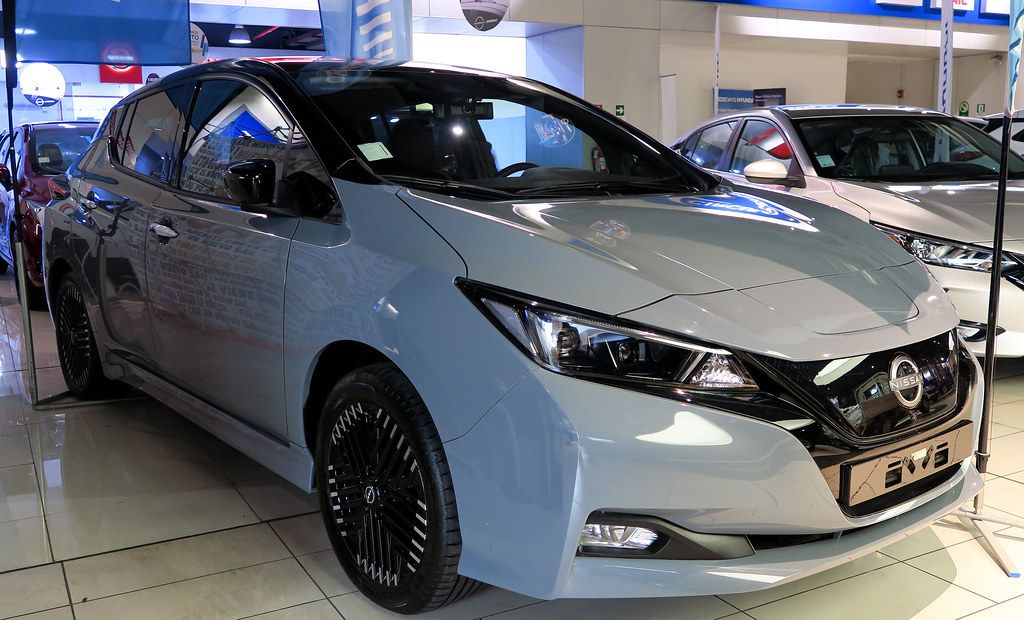
7. **Nissan LEAF**Shifting gears a bit, our next entry on the list of value-shedding vehicles is truly unique: the Nissan LEAF. Unlike the parade of luxury sedans and SUVs, the LEAF stands out as the only non-luxury car to make it into this top 10. While its initial sticker price is considerably lower, its percentage loss is still quite significant, losing an average of 64.1% of its value over five years. This highlights depreciation’s broad impact across different market segments.
What does that percentage mean in real money? For the average LEAF owner, it translates to about $18,043 lost from the original purchase price. While this dollar amount might seem less dramatic than the tens of thousands vaporized from luxury models, it’s a substantial hit for a car in its more accessible segment. It’s a vivid illustration that even budget-friendly electric vehicles aren’t immune to the rapid depreciation trends impacting the EV market, which struggles with an overall 58.8% value loss over five years.
The LEAF has been a pioneer in the mass-market EV space. However, like many early electric vehicles, it’s particularly susceptible to battery degradation over time, which can significantly impact its range and appeal. This is a critical factor for used car buyers, as the health of the battery directly affects the car’s usability and long-term value. As EV technology rapidly advances, older models like the LEAF can quickly feel outdated, further impacting their desirability and resale value.
For those on the hunt for a budget-friendly electric vehicle, the silver lining is the abundance of deeply discounted used LEAFs. You might find astonishing deals, offering a gateway into EV ownership at a fraction of the original cost. However, a crucial piece of advice for any prospective used LEAF buyer: thoroughly inspect the battery health before making a purchase. Knowing the battery’s state will help you understand the car’s true range and potential longevity, saving you from unpleasant surprises.
Car Model Information: 2014 Nissan Frontier S
Name: Nissan Leaf
Caption: A second generation Nissan Leaf
Manufacturer: Nissan
Production: October 2010 – present
ModelYears: 2011–present
Class: Unbulleted list
BodyStyle: Unbulleted list
Layout: Front-engine, front-wheel-drive layout
Predecessor: Unbulleted list
Categories: 2020s cars, All articles containing potentially dated statements, All articles with dead external links, Articles containing Japanese-language text, Articles containing potentially dated statements from December 2015
Summary: The Nissan Leaf (Japanese: 日産・リーフ, Hepburn: Nissan Rīfu; stylized as LEAF) is a battery-electric car manufactured by Nissan, produced since 2010. It was offered exclusively as a 5-door hatchback until 2025, which since then has become a crossover SUV model. The term “LEAF” serves as a backronym to leading environmentally-friendly affordable family car.
The Leaf was unveiled on 1 August 2009 as the world’s first mass market electric and zero-emission vehicle. Among other awards and recognition, it received the 2010 Green Car Vision Award, the 2011 European Car of the Year, the 2011 World Car of the Year, and the 2011–2012 Car of the Year Japan. The Leaf’s range on a full charge has been steadily increased from 117 km (73 miles) to 364 km (226 miles) (EPA rated) by the use of larger battery packs and several minor improvements.
As of September 2021, European sales totalled more than 208,000, and as of December 2021, over 165,000 had been sold in the U.S., and 157,000 in Japan. Global sales across both generations totalled 577,000 by February 2022. The Leaf was the world’s all-time top selling plug-in electric car until it was surpassed in early 2020 by the Tesla Model 3.
Get more information about: Nissan Leaf
Buying a high-performing used car >>>
Brand: Nissan Model: LEAF
Price: $13,435 Mileage: 131,197 mi.
Read more about: Buyer Beware: 15 Popular Cars That Seriously Disappointed Owners, According to Driver Regrets and Reliability Data

8. **Maserati Levante**Prepare for another Italian entry that tugs at the heartstrings with its exquisite style but, alas, empties the wallet with its relentless depreciation: the Maserati Levante. Much like its sedan sibling, the Ghibli, Maserati models have earned a notorious reputation for struggling with value retention, and this luxury SUV is no exception. The Levante sheds an average of 63.7% of its value over five years, equating to a truly substantial financial hit of $64,991. It’s the kind of number that makes your eyes water.
This significant drop in value places the Levante squarely in the challenging territory of luxury vehicles that, despite their initial premium pricing, fail to hold their appeal in the secondary market. It’s a recurring theme for exotic and high-end brands: the moment they leave the showroom, their value takes a precipitous plunge. Adding to its current situation, Maserati has actually ended production of the Levante, although a few brand-new examples might still linger on dealership lots.
Seth Godwin, the straight-talking personal finance content creator, frequently includes the Levante in his discussions on rapid depreciation. His insights highlight the financial realities facing owners of these vehicles. The blend of a high initial cost, niche market appeal, and rapid evolution of automotive technology creates a perfect storm for such dramatic value erosion, making them a cautionary tale for new car purchasers focused on resale.
But here’s the exciting part for the intrepid bargain hunter: if your dream car wears the distinctive Trident badge and you’re brave enough to venture into the realm of used Italian exotics, the Levante offers incredible opportunities. The sheer scale of its depreciation means that a pre-owned Levante can be acquired at a vastly reduced price. While you’ll need to consider potentially higher maintenance and repair costs, the initial savings are truly compelling, making that Italian flair more accessible.
It’s a chance to experience distinctive Italian luxury and powerful performance without the full new-car financial sting, assuming you’re ready for the adventure. Just imagine pulling up in a Maserati for the price of a more mainstream new car – it’s certainly a statement. But remember, a thorough pre-purchase inspection and a robust maintenance fund are your best friends in this high-stakes game of automotive value.
Car Model Information: 2023 Maserati Levante Tributo
Name: Maserati Levante
Caption: 2016 Maserati Levante S (Europe, pre-facelift)
Manufacturer: Maserati
Production: May 2016–2024
ModelYears: 2017–2024
Assembly: Turin
Designer: Centro Stile Maserati
Class: Mid-size crossover SUV#Luxury vehicles
BodyStyle: Sport utility vehicle
Layout: F4 layout
Platform: Maserati M156 platform
Related: Maserati Ghibli (M157),Maserati Quattroporte VI
Engine: unbulleted list
Motor: eBooster 48V (eTorque)
Transmission: ZF Friedrichshafen,ZF 8HP transmission,Automatic transmission
Drivetrain: Mild hybrid
Wheelbase: 3004 mm
Abbr: on
Length: 5003 mm
Width: 1968 mm
Height: 1679 mm
Weight: convert
Sp: uk
Categories: All-wheel-drive vehicles, Articles with short description, Cars introduced in 2016, Luxury crossover sport utility vehicles, Luxury sport utility vehicles
Summary: The Maserati Levante (Tipo M161) is an executive crossover SUV produced by Italian manufacturer Maserati at the Mirafiori factory in Turin from 2016. The Levante went on sale in Europe in May 2016, and in North America in September 2016. Production of the Levante ended in 2024, commemorated with the release of a top-spec 424BHP special edition.
The Levante was named after a warm, easterly wind that blows in the western Mediterranean Sea, southern France, down to the Strait of Gibraltar. The name of the wind, in turn, comes from the Latin word “levare”, which means “to rise”. Its design is based on the Kubang concept car that debuted at the 2011 Frankfurt Auto Show.
Get more information about: Maserati Levante
Buying a high-performing used car >>>
Brand: Maserati Model: Levante
Price: $59,995 Mileage: 6,273 mi.
Read more about: 14 Cars That Drive Off a Financial Cliff: Understanding Rapid Depreciation and Smart Buying Strategies
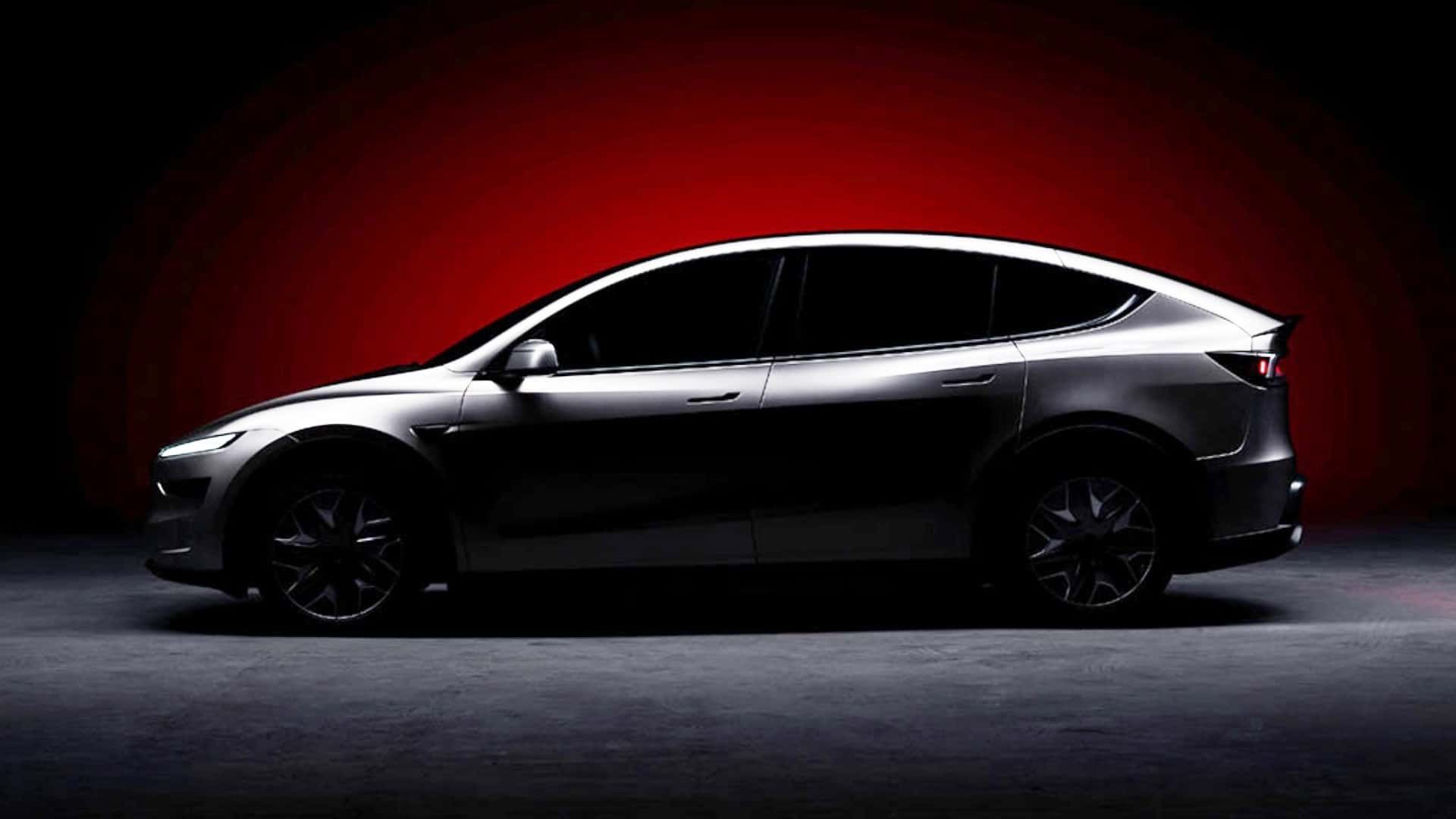
9. **Tesla Model X**Our journey through the landscape of rapid depreciation brings us to another groundbreaking electric vehicle, the distinctive Tesla Model X. This falcon-winged SUV, which once turned heads with its unique design and advanced features, now finds itself squarely on the list of cars that lose value at an alarming rate. On average, the Model X depreciates by a staggering 63.4% over five years, translating to an average loss of $53,846 from its original price. It’s a significant financial plummet for a vehicle that began its life as a symbol of cutting-edge innovation.
A significant factor contributing to the Model X’s accelerated depreciation is its longevity in the market without a major redesign. Available for approximately 10 years with only minor updates, it’s inevitably begun to show its age in a rapidly evolving EV segment. When first launched, the Model X was truly groundbreaking. However, the competition has since caught up and surpassed it in terms of features, design freshness, and even overall reliability. The market is now flush with numerous excellent electric SUV alternatives.
The advice here is straightforward: if you’re considering a Model X, buying new might not be the wisest financial decision if long-term value retention is a primary concern. The rapid pace of innovation in the EV space means newer, more advanced models are constantly emerging, making older designs less attractive on the used market. For potential buyers prioritizing value and up-to-date technology, seeking out competitive options could be a smart move, both financially and practically. There’s a whole world of fantastic EVs out there now.
However, for those still drawn to the Model X’s unique appeal, impressive performance, and signature falcon-wing doors, its high depreciation rate certainly creates a robust used market. You can find these technologically advanced SUVs at significantly reduced prices, offering a chance to experience the distinctive Tesla ecosystem without the immediate financial hit of buying new. Just be mindful of the potential for costly out-of-warranty repairs and consider the vehicle’s age relative to the cutting-edge of EV technology. It’s an opportunity for a high-tech bargain, but one that requires a careful eye on future costs.
Car Model Information: 2018 Honda Civic EX
Name: Tesla Model X
Manufacturer: Tesla, Inc.
Production: 2015–present
Assembly: unbulleted list
Designer: Franz von Holzhausen
Class: Crossover (automobile)
BodyStyle: 5-door SUV
Layout: unbulleted list
Doors: unbulleted list
Related: Tesla Model S
Motor: unbulleted list
Title: Discontinued
Transmission: unbulleted list
Battery: unbulleted list
ElectricRange: FTP-75
Wheelbase: cvt
Length: cvt
Width: cvt
Height: cvt
Weight: unbulleted list
Sp: us
Categories: 2020s cars, All Wikipedia articles in need of updating, All Wikipedia articles written in American English, All articles containing potentially dated statements, All articles lacking reliable references
Summary: The Tesla Model X is a battery electric mid-size luxury crossover SUV built by Tesla, Inc. since 2015. Developed from the full-sized sedan platform of the Tesla Model S, the vehicle uses distinctive falcon wing doors for rear passenger access.
The Model X has an EPA size class as an SUV, and shares around 30 percent of its content with the Model S, half of the originally planned 60 percent, and weighs about 10 percent more. Both the Model X and Model S are produced at the Tesla Factory in Fremont, California. The prototype was unveiled at Tesla’s design studios in Hawthorne, California, on February 9, 2012. First deliveries of the Model X began in September 2015. After one full year on the market, in 2016, the Model X ranked seventh among the world’s best-selling plug-in cars. A refresh of the Tesla Model X was introduced in 2021, offering a new “Plaid” performance model, along with a revised interior, powertrain, and suspension.Another update of the Model X was introduced in June 2025 with a new front bumper camera, new wheel designs, increased third-row space, dynamic ambient lighting, and adaptive headlights. The updates are similar to the Model S, which was updated at the same time.
As of July 2025, the Model X is available as a Long-Range version with an estimated EPA range of 352 miles (566 km) and a high performance “Plaid” version with an estimated EPA range of 335 miles (539 km).
Get more information about: Tesla Model X
Buying a high-performing used car >>>
Brand: Tesla Model: Model X
Price: $19,974 Mileage: 64,299 mi.
Read more about: 15 Cars That Become Costly Money Pits After 100,000 Miles: Essential Insights for Savvy Buyers
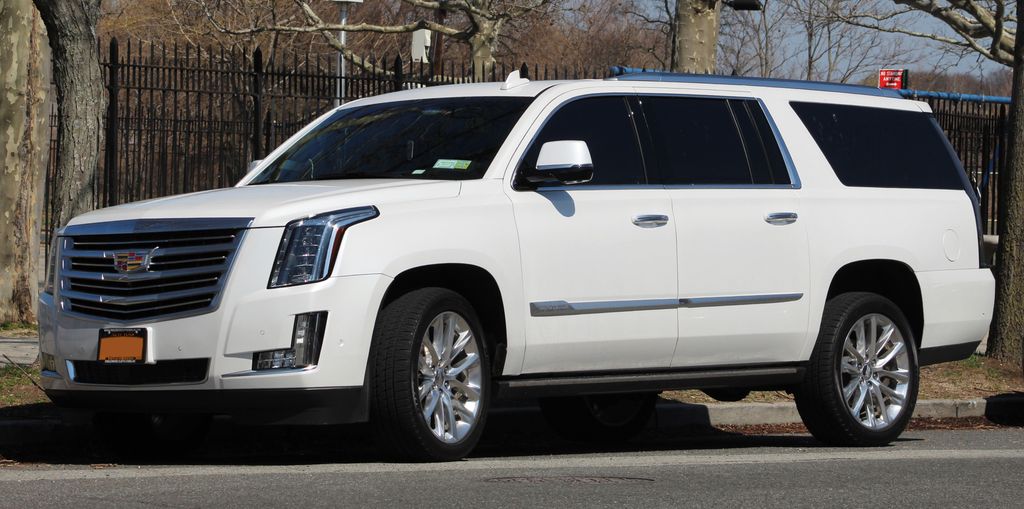
10. **Cadillac Escalade ESV**Wrapping up our exclusive list of depreciation heavy-hitters is an undisputed icon of American luxury and imposing presence: the Cadillac Escalade ESV. The ‘ESV’ here, for those wondering, stands for Escalade Stretch Vehicle, and it certainly stretches the limits of value retention. Owners of this full-size luxury SUV can expect to see an average of 62.9% of its original value vanish over five years, a truly substantial financial hit amounting to approximately $56,996. That’s a lot of cheddar to see disappear into the ether.
The standard-length Cadillac Escalade also appears on the broader depreciation list, albeit slightly further down at 16th place, losing a still-significant 61% of its value over five years. This consistent performance across both variants indicates a general trend where large, high-end SUVs, despite their initial grandeur, often struggle to maintain their value in the used market. The hefty purchase price, combined with evolving consumer preferences and the sheer cost of ownership – think fuel, maintenance, and insurance – all contribute to this rapid decline in worth.
For many, the Escalade embodies a certain lifestyle, a powerful statement on wheels that commands attention wherever it goes. But the market dictates a different reality for these automotive behemoths once they’ve left the showroom floor. The initial depreciation is absorbed by the first owner, which, while undoubtedly tough for them, opens up fantastic opportunities for others. If you’ve always yearned for the spaciousness, luxurious interior, and commanding road presence of an Escalade, the used market is most definitely your friend.
This significant depreciation means that you can snag a used Escalade ESV for a fraction of its original MSRP, making that aspirational luxury far more accessible. It’s a prime example of how one person’s significant financial loss can become another’s incredible deal, allowing you to experience the ultimate in American luxury at a more palatable price point. Just be prepared for the ongoing costs associated with owning such a large and lavish vehicle, but the initial savings can certainly make the prospect of cruising in an Escalade ESV a reality for savvy second-hand buyers. It’s a win-win, if you play your cards right.
So there you have it, a candid and deep dive into 10 cars that, for various reasons, just don’t hold onto their value as tightly as others. From innovative but rapidly evolving electric vehicles to opulent luxury sedans and SUVs whose premium features don’t always translate to enduring resale appeal, the lesson is crystal clear: depreciation is a powerful and often surprising force in the automotive world. For those considering a brand-new purchase, understanding these trends isn’t just a suggestion; it’s paramount to making a truly financially sound decision, saving you thousands down the line.
But here’s the exciting twist for the savvy used car shopper: this list isn’t just a warning sign; it’s a meticulously crafted treasure map. It highlights precisely where the real bargains are hiding, offering a golden opportunity to drive a dream car or a technologically advanced EV without the crushing burden of its initial value loss. Imagine cruising in a luxury SUV that once cost six figures, now within your reach, simply because its original owner took the brunt of the depreciation hit.
Car Model Information: 2018 Honda Civic EX
Name: Cadillac Escalade
Caption: Fifth generation Cadillac Escalade
Manufacturer: Cadillac
Production: 1998–present,2002–present (ESV),2001–2013 (EXT),2008–2013 (Hybrid)
ModelYears: 1999–2000,2002–present
Class: Full-size,luxury car,sport utility vehicle
Related: ubl
Layout: Front-engine, rear-wheel drive layout,Front-engine, four-wheel drive layout
Categories: 2000s cars, 2010s cars, 2020s cars, All-wheel-drive vehicles, All Wikipedia articles in need of updating
Summary: The Cadillac Escalade is a full-size luxury SUV manufactured by General Motors and marketed by Cadillac as its first major entry into the SUV market. The Escalade was introduced for the 1999 model year in response to an influx of new luxury SUVs in the late 1990s including the Mercedes-Benz M-Class, Range Rover, Lexus LX, and Ford’s 1998 debut of the Lincoln Navigator. The Escalade project went into production only ten months after it was approved. The Escalade is built in Arlington, Texas.
The term “escalade” refers to a siege warfare tactic of scaling defensive walls or ramparts with the aid of ladders or siege towers. More generally, it is a French word which is the noun-equivalent form of the French verb escalader, which means “to climb or scale”.
The Escalade is currently sold in North America and select international markets (Europe and Asia) where Cadillac has official sales channels. The Escalade ESV (Escalade Stretch Vehicle) is sold in North America, Russia, and the Middle East, but is only available by special order in some international markets. The right-hand-drive Escalade and Escalade ESV are available through third-party conversion specialists without official agreement with Cadillac in Australian, Oceanic, and Japanese markets.
On August 8, 2023, GM presented the Escalade IQ, an all-electric version of the Escalade, and the third model in Cadillac’s EV line, after the Celestiq, and Lyriq. It is expected to go on sale in late 2024 for the 2025 model year, with a starting price of $130,000.
The Escalade has gone through five generations, the most recent (the fifth) prsented in 2021, noted for its technology and self-driving capability. The fifth generation Escalade is nearly two metres high, and was criticized by The Verge for its excessive size and hazard to pedestrians.
Get more information about: Cadillac Escalade
Buying a high-performing used car >>>
Brand: Cadillac Model: Escalade ESV
Price: $19,974 Mileage: 64,299 mi.
Read more about: Beyond 250,000 Miles: 14 Indestructible SUVs That Define Automotive Longevity
Whether you’re looking to save tens of thousands on a pre-owned luxury ride, hoping to snag an EV at an unprecedented discount, or simply want to avoid the pitfalls of rapid depreciation with your next new vehicle, knowing which cars take the biggest hit empowers you to make infinitely smarter choices. In a market where every dollar counts, being informed is your ultimate superpower. Happy car hunting, and may your future rides be both thrilling and financially intelligent, keeping your wallet as full as your gas tank (or battery!)


